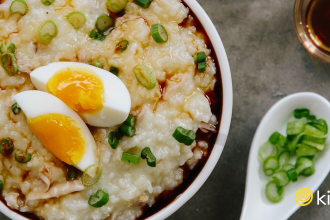Modern food trends and music have had one significant thing in common lately: mash-ups. There have been cronuts, there have been sushi burgers and sushi cakes, there have been, for better or worse, macaroni and cheese pancakes. Now, brewers have ramped up the game by combining beer and wine.
No, this isn’t a gimmick, and not an entirely new concept, either. Beer and wine have been combined since the 1990s, and evidence of the blend has popped up in 9,000-year-old Chinese pottery. But it’s no surprise that until recently, the idea hasn’t really caught on. Historically, beer has been a so-called “pure” drink: it was either frowned upon or illegal to put anything besides water, barley, hops, and yeast into it. Then, with corporations like Coors and Anheuser-Busch running the scene and sticking to tradition in the late 1900s, there wasn’t a lot of space for newcomers.
Now, we’re in an age of innovation, where Brewmeister Brewery is making 135 proof beer and people are paying $100 for bottles made from coffee beans that have been digested by elephants. Beer can taste like coconut, oysters, peanut butter, or pizza, and can be drunk while doing yoga. It only makes sense that the next step was to knock down the wall between wine people and beer people.
Modern lore has it that credit for all this is owed to University of Pennsylvania researcher Patrick McGovern and Dogfish Head. McGovern unearthed the cask proving how far back beer-wine dates, and at his request, Dogfish Head came up with a near-identical recipe.
The process of creating beer-wine is, in some ways, quite simple: brewers ferment beers in wine barrels or just toss the raw beer grains in with the grapes during fermentation. One of the biggest issues is finding the right yeast, a delicate balancing act. Traditionally, beer makers opt for ale and lager yeast: it works quickly and can tackle both complex and simple sugars. Wine yeasts, however, aren’t so friendly when paired with these other yeasts, and can take significantly longer to yield a finished product. A finished product which will generally taste like wine and have the texture of beer, opening up an entirely new realm of flavors for beer drinkers.
As you’d expect, these flavors and notes vary wildly and brewers pair grapes and beers with complimentary undertones. San Francisco’s Social Kitchen, for example, has created a saison brewed with local Sauvignon grapes that’s bright and fruity. However, everything from Pinot Noir to Pinot Gris to Syrah can be used, with brewers taking advantage of nearby, high-quality vineyards or hunting down barrels that best match the beer. As the bottling process is a little longer than a traditional ale, many breweries have started to open up club programs to cover costs until customers can take the first sip.
Many consider it the best of both worlds and the bridge between them. But as a gluten-intolerant wine snob, I’ll just stick with my Chardonnay.


